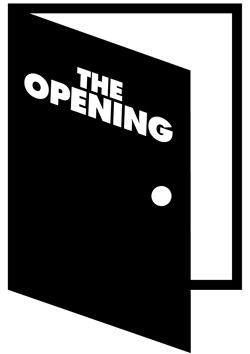 |
THE OPENING is all about delving into the fascinating, quirky and wonderful visual arts in Vancouver. Each week we’ll feature an artist, cover an exhibition, discuss a lecture and everything else in-between to delve deep into who and what makes art happen! |
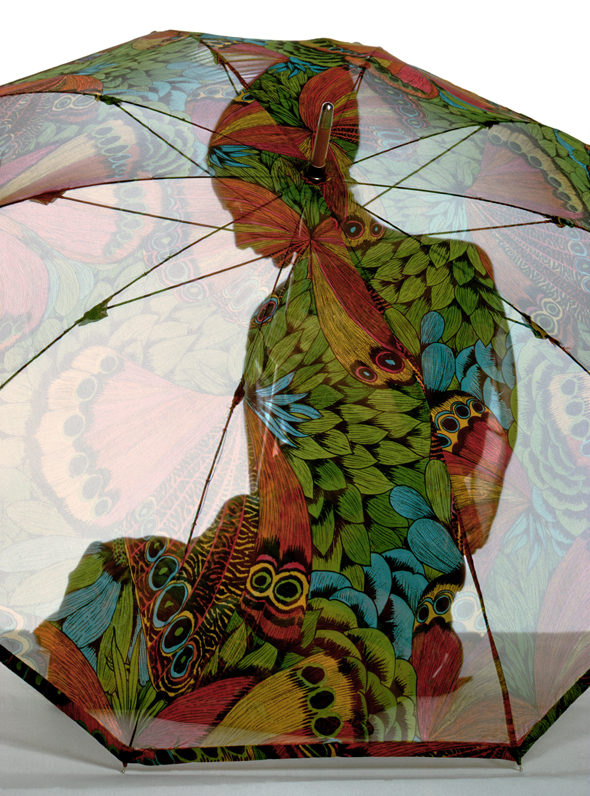
1967, Paris, cover for Harper's Bazaar
Fashion photography today tends to be heavily edited and stylized, often at the expense of realism. While sometimes it looks cool, it often leaves me wondering if I could ever hope to wear the same clothes with anything resembling style. As a photography nerd, it also makes me long for the simple but stunning fashion photography of the 1960s, 70s and 80s by such innovators as Richard Avedon, Herb Ritts and Helmut Newton, using nothing but film. Thankfully I can satiate myself right now with a visit to Presentation House Gallery (PHG) in North Vancouver to view the stunning work of another excellent photographer from that period, Frank Horvat. Horvat and exhibition curator Vince Aletti had a live conversation at Emily Carr University last Saturday afternoon touching on a number of highlights from Horvat's long career, parts of which I'll draw from in discussing his photography and exhibition.
Born in Italy in 1928, Horvat began working as a freelance photographer shortly after the end of World War II. At first he focused on freelance reportage, travelling to India and Pakistan to photograph as much as he could of what was happening in other parts of the world. For Horvat, photography was a way to explore the things around him that he was curious about, to seek answers to questions he was only beginning to form.
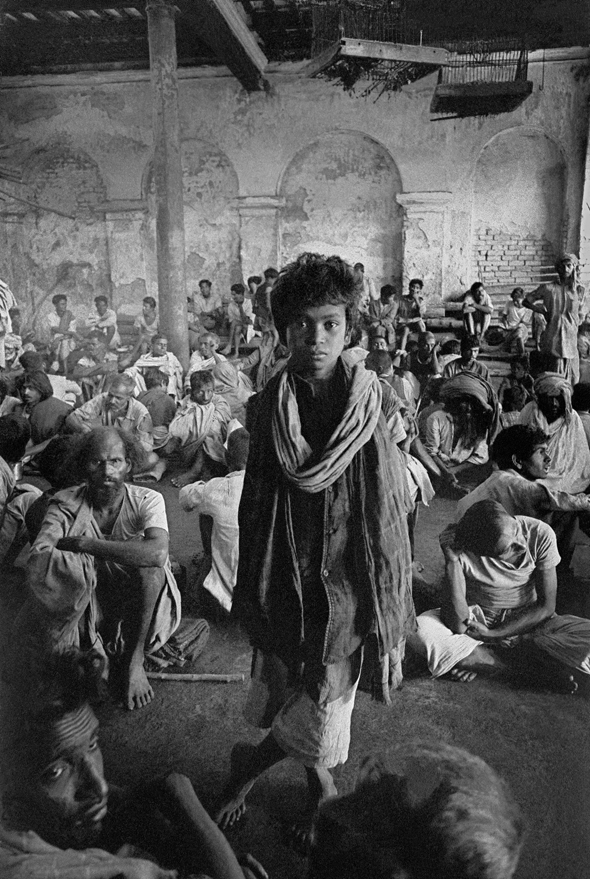
1962, Calcutta, India, Beggar Assembly
After a couple of years in London working for LIFE and Picture Post magazines, Horvat moved to Paris in 1955, joined the prestigious Magnum photo agency and began focusing on fashion photography. Throughout his career, he photographed for Harper's Bazaar, Vogue, Elle, Glamour - magazines that then as now represent the upper echelon of fashion photography. His work was characterized by his desire not to focus on the model, oftentimes cutting off their head in the frame of the photograph to eliminate their pose, expression and emotion from the final image. The French press jokingly called him the Robespierre of fashion photography during the first exhibition of his fashion work in 1977 as a result.
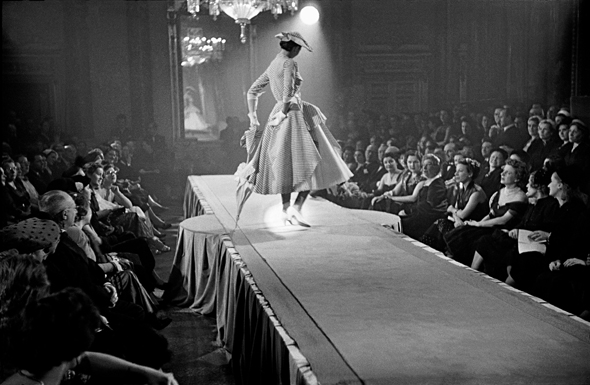
1951, Paris, haute couture collection
While the majority of Horvat's work on view at PHG is fashion-based, it is interspersed with bits of his reportage work. This is important to him, that his work be considered in the context of his other photography, and indeed it makes an impact here. Fashion photography is often staged either in a studio or on location, but with Horvat's images, his experience in reportage and using every available moment given to him to its fullest makes a difference. You often get the feeling that this woman (or occasionally man) is out living in these clothes, in this scene, in this experience. Be it walking down the street or cavorting with famous Italian men or playing with a child, the models in his images aren't just models, they are actual people.
As previously mentioned, Horvat was a member of the prestigous Magnum photo agency, a photo cooperative formed in 1947 by Robert Capa, Henri Cartier-Bresson, George Rodger and David "Chim" Seymour. It was here he gained some useful advice from Cartier-Bresson, one of the most famous photographers in history: his composition was hopeless and he needed to go to the Louvre and look at all the paintings. Well then! He also told Horvat that he didn't believe a photographer could shoot both reportage and fashion at the same time, but it's clear that he proved him wrong, and in fact one informed the other and vice versa.
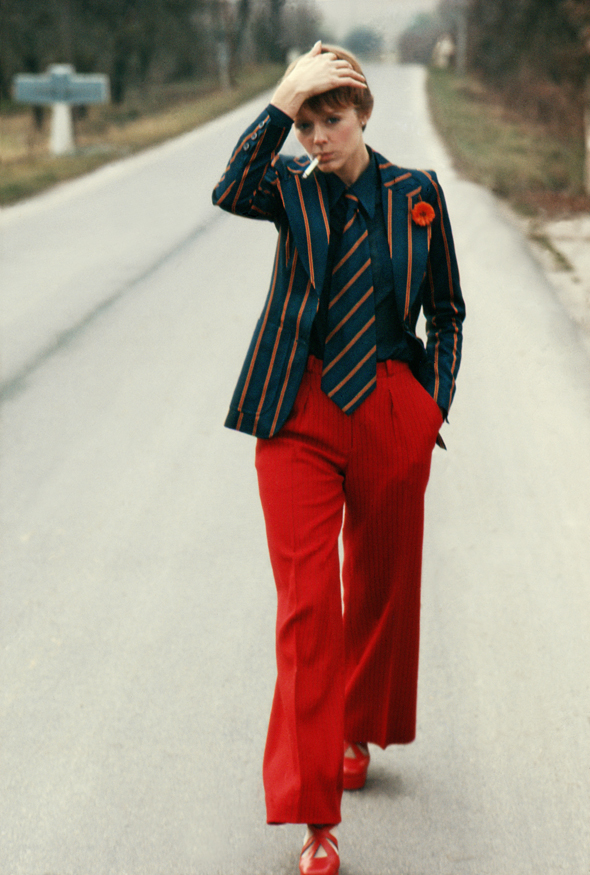
1972, Armenonville, Pret-a-Porte, for Vogue France
A number of the works at PHG are not framed on the wall, but still remain as they were originally meant to be seen - as magazine spreads. One notable spread includes images of a trip to India during Indira Gandhi's time as Prime Minister. As Horvat explained in conversation with Aletti, sometimes when a "third world dictator" needed good press in that era, they would call up one of the fashion magazines and ask how much it would cost to do a special issue on their country. While he apparently spent most of the time fighting with the Indian officials who just wanted to take him to approved nice places, he ended up with stunning colour images of everyday Indian life.
In another spread (which Aletti notes was included in the exhibition "for obvious reasons"), Horvat visited Baffin Island in northern Canada to photograph children's furs. Certainly not a spread you would expect to see in fashion magazines today, but times have changed! The child models were found at the local school, where he asked for the worst, most misbehaved children - on the assumption that they would be more fun to work with. While I am often bored with the typical Canadian winter stereotype, the photographs are fun and capture the mischievous joy of children. It doesn't hurt that Horvat photographs the harsh, unrelenting landscape in such an alluring way that almost makes you forget just how cold it probably is.
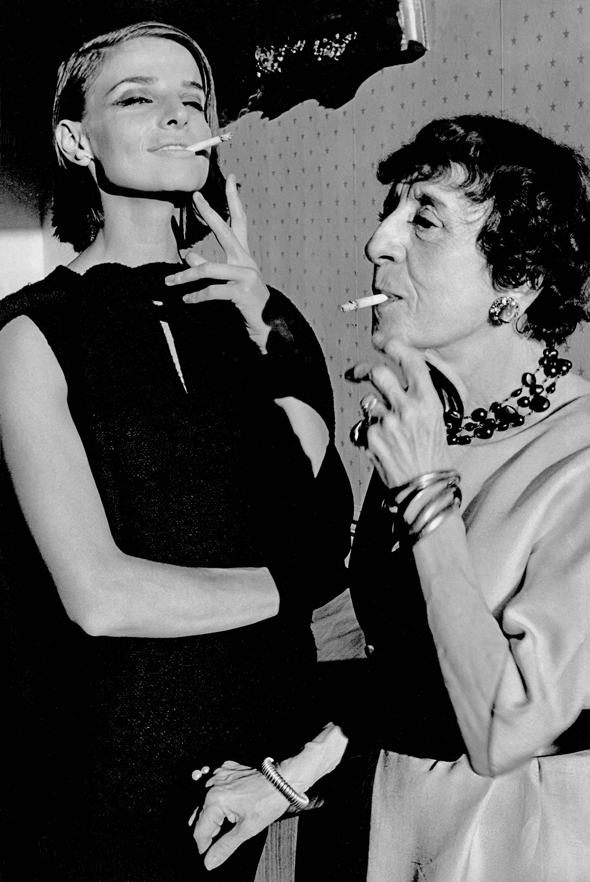
1962, Paris, for Harper's Bazaar, High Fashion with Iris Bianchi and the writer Marie-Louise Bousquet
Today Horvat isn't shooting fashion photography. What he is shooting is on his little Canon digital point-and-shoot, and it's all for his own pleasure. He finds he shoots ten times less with digital because with the ability to see the results right away, he has been finding that his first image is usually his best one. After so many years and so many 'best' photographs, I'd say he has nothing to worry about.
HORVAT: FASHION is on now at Presentation House Gallery until December 23, 2012.
All images courtesy Presentation House Gallery and the artist.


